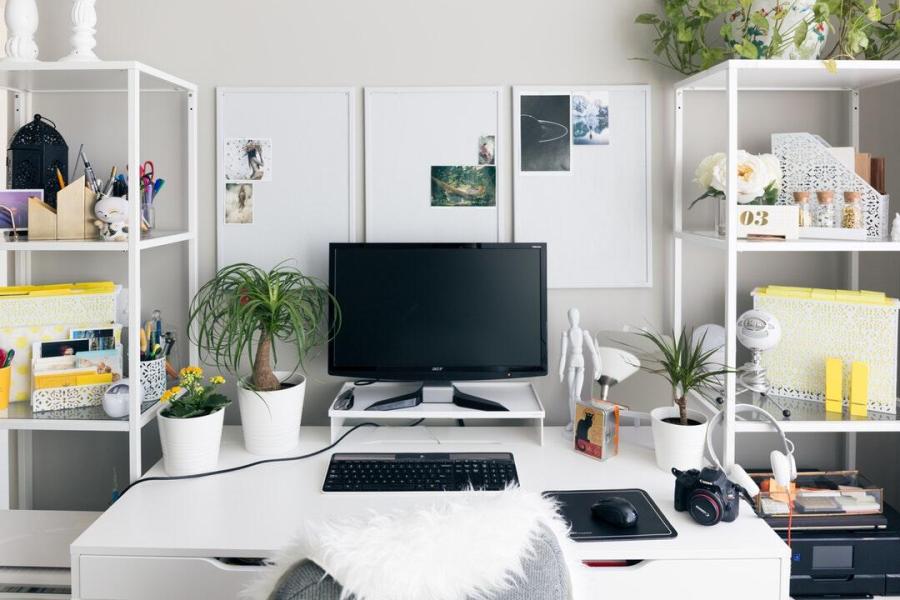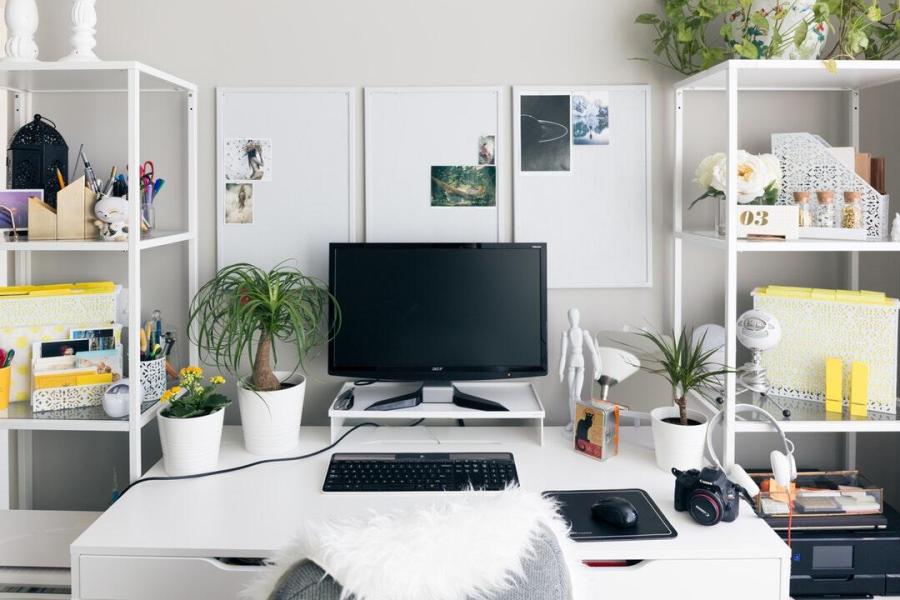
You’re working hard to meet a deadline when a mild pain starts to develop in your wrist. Later that day, your shoulders feel heavy, and the tightness in your neck makes it difficult to move your head. This isn’t just stress; it’s caused by improper ergonomics.
As per the Bureau of Labor Statistics,33 percentApproximately U.S. worker injuries were linked to ergonomics, indicating that your sitting posture, typing habits, and screen placement might be negatively affecting your health and efficiency without you realizing it. The positive aspect is that research has discovered effective methods for designing a workspace that maintains your comfort and enhances your performance.
Let’s walk through the process of creating the idealergonomic office setup.
Aim for Neutral Posture
A neutral stance isn’t just a popular term; it’s a biomechanical position that reduces physical strain and allows the body to function effectively. The spine retains its natural S-shape,and joints stay properly positioned without pressure.
When the body is in this posture, muscles don’t need to overwork. This minimizes tiredness and decreases the chance of harm. To do this, place your feet directly on the ground and flex your knees at a 90-degree angle.
Your hips need to be positioned slightly higher than or aligned with your knees to avoid pressure on the lower back. The chair’s backrest must provide support for the lower back without causing your shoulders to jut forward. The armrests should offer light support for your forearms without raising your shoulders.
The objective is to prevent static strain. Small modifications during the day maintain a dynamic posture, instead of remaining fixed. A proper configuration ensures a neutral position is the standard, not an occasional occurrence.
When all factors align properly, maintaining concentration becomes simpler since your body isn’t hindered by discomfort. This is the science explaining the importance of posture: it establishes physical conditions.that enhance mental performance, not merely provide comfort.
Check Your Lighting
Lighting affects more than just seeing clearly. Inadequate lighting causes eye strain and boosts tiredness by putting extra pressure on the eyes and body.to make up for the absence of light.
Common issues include:
- Overhead glare
- Low contrast
- Screen reflection
- Inconsistent lighting throughout the work area
- Flickering fluorescent bulbs
These are common in office settings that haven’t been assessed from an ergonomic perspective. Natural light is preferable when possible, but only if it doesn’t cause direct glare on the screen or work area.
Light entering from the side helps soften harsh shadows and lowers the chance of reflections. Adjustable blinds or light curtains can control the amount of light during the day without making the space feel like a cave, which can cause eye strain.
Task lightingShould be placed to emphasize the work area without causing glare on shiny screens or surfaces. A desk lamp featuring a flexible arm allows you to adjust both the angle and brightness.
This adaptability helps minimize squinting and the minor posture adjustments that build up over time, leading to discomfort. Cool white lighting enhances concentration and alertness during the day, whereas warmer hues can assist in easing eye strain in the late afternoon or early evening.
Place your lighting according to your primary hand to avoid shadows when writing or typing. Consider lighting as an integral part of the ergonomic setup, rather than an isolated decision, ensuring your workspace enhances your productivity instead of hindering it.
Pick the Right Furniture
Appropriate office furniture not only appears professional, but is also engineered to minimize physical discomfort and enhance efficiency during the workday.Desky’s collection of office furnishingsprovides a broad range of excellent choices to suit your requirements.
Workstations should support a neutral arm posture. If the desk surface is set too high or too low, it causes awkward shoulder and wrist positions, resulting in discomfort over time. Adjustable desks or properly sized work areas help ensure proper alignment of the arms, elbows, and wrists.
Monitor stands, foot supports, and keyboard platforms are more than just add-ons; they enable small yet essential adjustments that maintain proper joint alignment and keep muscles active. These practical components expand the advantages of ergonomic design beyond the primary furniture, aiding in the prevention of repetitive stress.
Watch Your Monitors
The positioning of the monitor significantly influences neck alignment, eye discomfort, and shoulder tightness. Displays that are excessively high, too low, or tilted to the side lead to a series of uncomfortable movements.
Over time, these movements turn into habits, and those habits may result in injuries. Ergonomic science clearly shows: the eyes and spineshould stay in position while using the screen.
The display should also be placed at a distance of an arm’s length, enabling the eyes to focus without effort or needing to lean forward. In the case of dual-monitor configurations, proper alignment becomes even more important.
If both displays are used equally, they should be positioned together in the center with little space between them. If one is used more frequently, place it directly in front and move the secondary screen to the side.
This helps avoid the frequent head movements that can cause muscle imbalances. Adjust the screen brightness according to the lighting in the room and employ anti-glare filters or matte displays when needed.
Signs That You Could Use a Repair
Ergonomic problems seldom appear suddenly. They develop gradually through small discomforts, recurring stress, and unobserved tension.until they begin to affect concentration and efficiency.
These cautionary indicators are frequently misunderstood as:
- Stress
- Fatigue
- Poor sleep
- Aging
- General burnout
The origin of the issue is frequently found within the workspace itself. Tension in the neck or shoulders by the end of the day is a clear sign that your monitor is positioned too low, too far away, or not properly centered.
If your lower back hurts after sitting, your chair might not provide enough support for your lower back, or your desk’s height could be causing you to adopt an incorrect posture. Experiencing tingling or numbness in your hands, fingers, or forearms may indicate that your keyboard or mouse is positioned in a way that puts pressure on nerves over time.
Chronic headaches can stem from more than just prolonged screen use. Inadequate lighting, reflections, and uncomfortable neck positions can all lead to eye strain that spreads to the temples or forehead. A burning sensation in the eyes or constant squinting usually indicates a problem with screen brightness or insufficient contrast between the background and text.
Design Your Comfortable Work Space Now
Now that you understand how to assemble aergonomic office setupThat suits you, and you’ll become more productive in a short period.
Are you looking for more chances to grow in your career in Tampa? Take a moment to check out some of our other useful articles.
Copyright 2025 Nexstar Media, Inc. All rights reserved. This content cannot be published, aired, altered, or shared again.
For the most recent updates, weather reports, sports coverage, and live video streaming, visit WFLA.







